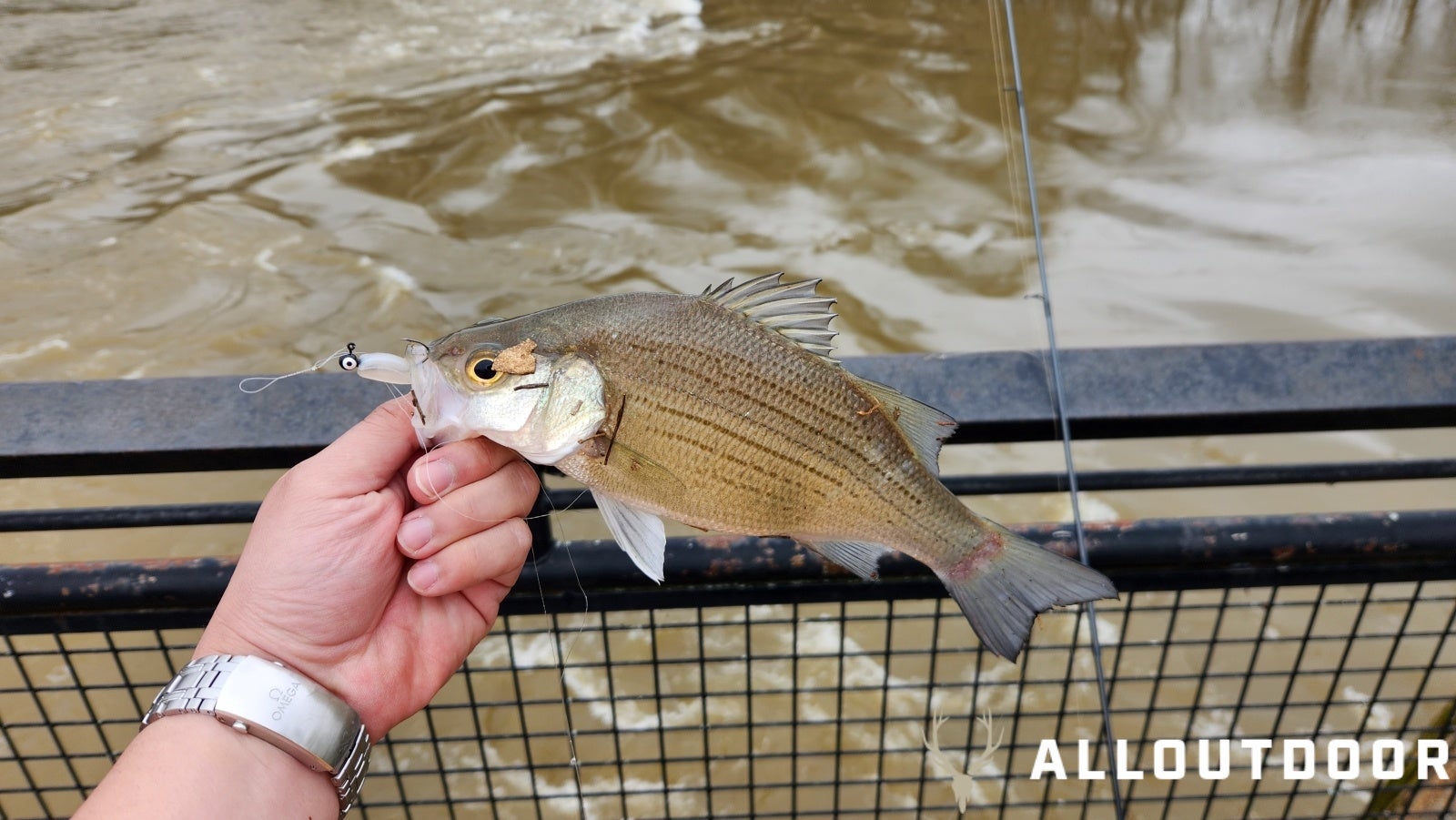How to Fish for Spring White Bass in the Upper Coosa
Eugene L. 03.27.24

Spring is here up in Northwest Georgia and so are the white bass (Morone chrysops). A smaller cousin to the very popular gamefish the striped bass (Morone saxatilis), maxing out at about 5lbs with the more common catch being in the 1/2lb to 2lb size range. They are silvery fish with several faint horizontal stripes on the side, with only one tooth patch on the tongue. These fish are one of the first signs of the coming spring on the Coosa River. Once the river water temperature starts to creep up past the 53F mark the white bass start their spring migration from Lake Weiss up into the river and its headwaters. You can easily catch a 15 white bass limit in short order depending on the water conditions and how well they are schooled up.
Fishing Coverage on AllOutdoor
- Quick Fishing Trip to Channel 2 Bridge in Islamorada
- Feeding Tarpon at Robbie’s of Islamorada – Village in Florida
- AllOutdoor Review – St. Croix Trout Series Spinning Rod 7ft Light
- Cook your Catch – Delicious, Smoked Bluefish Dip
- A Day in South Korea – Crucian Carp Fishing Park
Tackle-wise fishing for white bass is very simple and low-tech, all you need is a light to medium-weight rod and reel combo with some 6lb test line spooled up. So any bluegill or finesse bass rod will easily fit this bill. I personally use my 7ft St. Croix extra light trout rod just for a little added sport to the fight, but you don’t need to do that. For your lures again it is pretty simple, just some jigheads and soft plastics, pretty much the same sizes you would use to target crappie. Depending on the current and size of the river/creek you should use 1/8 oz to 1/32 oz jigheads. You want to tie on two of these jigheads at a time and tip both of them with a soft plastic. These can be fished as is or under a peg bobber. If you fish the jigs under a peg bobber you set your rig to the depth you want to set the jigs at, so after every pop you give them they end up back at the same depth. Without a bobber, you just want to let the jigs sink to the bottom and retrieve them back at an even pace while popping them for action. Besides a double jig rig for white bass, you can also use just a larger single jig with a white swim shad soft plastic, you’ll get fewer bites but usually catch a better grade of bass. Other lures work as well such as spoons, crankbaits, and rattletraps, but my best luck so far has been with the simple jig and soft plastic.
For bank fishermen, you got a couple of spots on the Coosa River that you can access to target white bass. The Lock and Dam Park is a good place to start. With the Lock acting as a fishing pier there is plenty of space to fish here. Anglers prefer the back of the lock fishing in the edy that forms as the current flows past the lock. Fish can often aggregate there waiting on prey to be washed over to them. Another popular spot is across the boat ramp near the mouth of a creek that flows into the river. One thing to note with the Coosa being a dam-fed river from Carters Lake and Alatoona, the water level can vary greatly, so this can affect where the fish hold greatly. So don’t expect the bite or where the fish hold to stay the same day to day. Water levels can rise or drop up to 8ft overnight. If you’re fishing from a boat try to find structure that causes breaks in the current, spots of slack water right near the current often hold fish waiting for prey or just getting out of the current as they go upstream. Creek mouths can also hold fish as they stage before they go upstream looking for sand bars to lay their eggs on.
While the main target is white bass, it should be noted that many other fish can be caught this way. The crappie are also on the move out of the lake upriver to spawn and are often caught as a welcome addition to the stringer. So are yellow bass, a smaller cousin of the white bass, these only get up to a pound in size and with how prolific they can be can be considered a nuisance when targeting larger fish. Another bass you can catch is the larger striped bass, which often will break you off when fishing with lighter tackle. But on occasion, big ones are caught on this lighter tackle after a lengthy fight.
If you really want to try your hand at catching these scrappy little bass you need to start fishing now. This is a spring-only sort of endeavor on the river with the bite only lasting from late February to early May at the latest. Once the white bass reach their spawning grounds and spawn they will start heading back downriver across the border in Lake Weiss. There they will school up in deeper water till instinct drives them once again next year to come upriver. Even if you aren’t fishing the Coosa, the techniques shown will work for white bass across the nation. Timing wise just keep an eye on the water temperature, once it reaches the mid-50s expect the spawn and migration to begin. Hopefully, this helps yall out with trying to get some white bass this spring.








